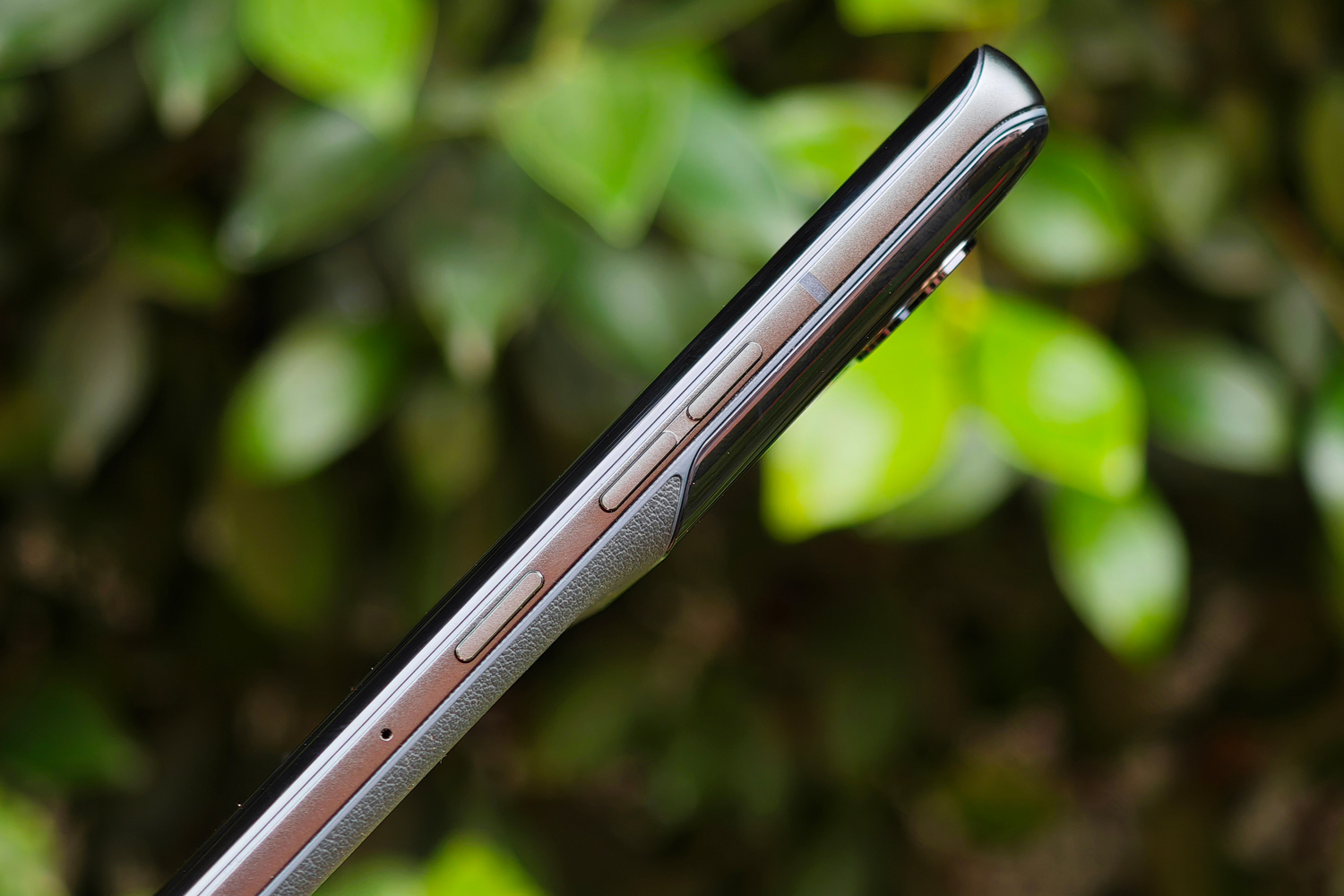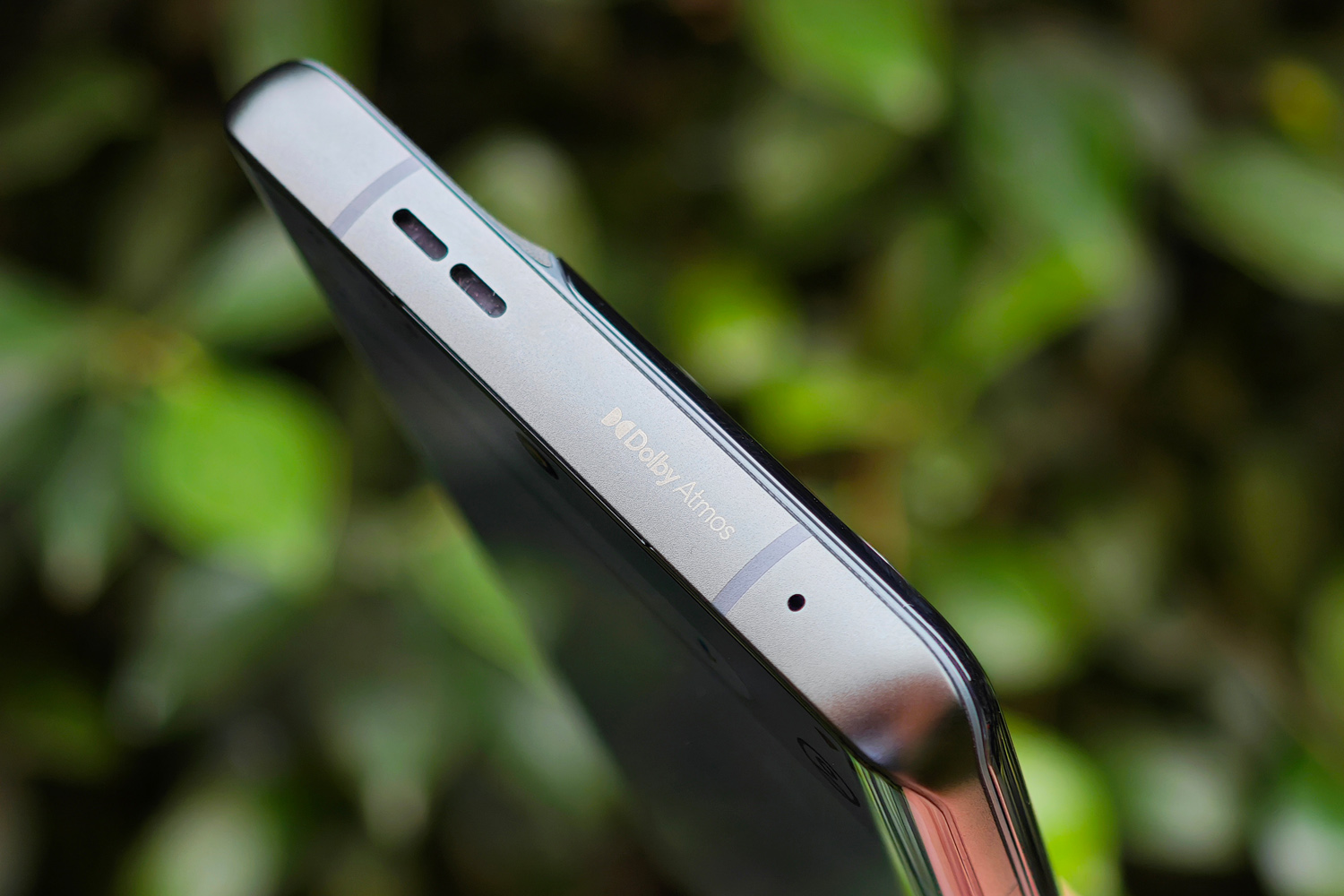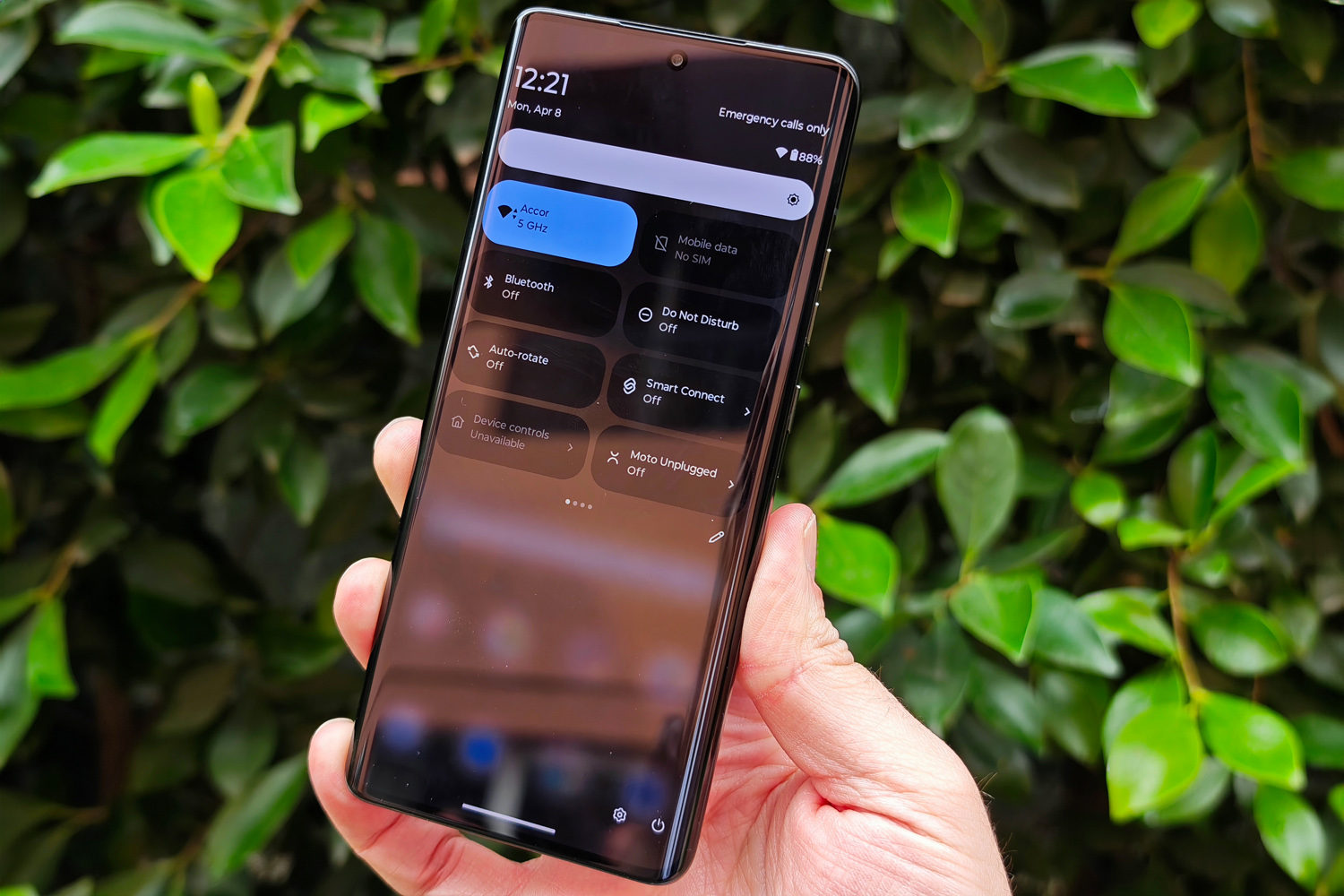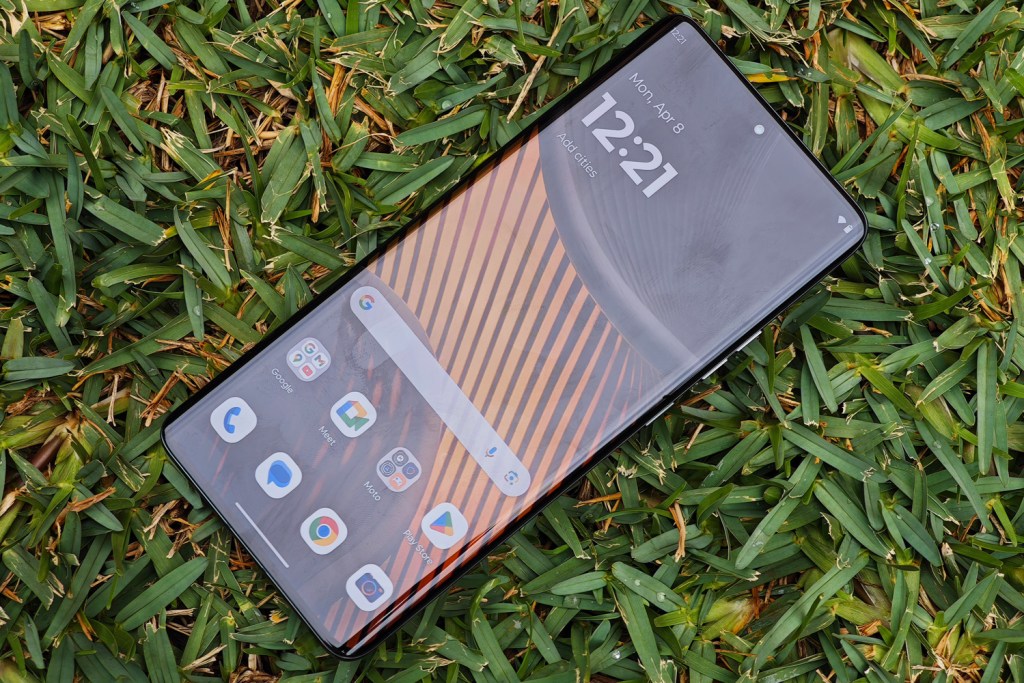Motorola Edge 50 Ultra hands-on review: ultimate evolution?
Style-led flagship doesn't go quite has heavy on hardware as some rivals

Initial Stuff Verdict
The Edge 50 Ultra is a seemingly strong alternative to the usual flagships, if not quite up there with other Ultra-branded phones for bleeding edge hardware.
Pros
- Chipset promises power and efficiency
- Capable camera hardware
- Real wood finish is an attention-grabber
Cons
- Battery could be bigger
- Extremely high bar for photography at this price
Introduction
The Ultra label carries a lot of baggage these days. It denotes some of the best smartphones on sale; ones that seemingly have more camera smarts than a DSLR, better performance than some desktop computers, and screens bright enough to outshine the sun. The Motorola Edge 50 Ultra, though? That’s something a little different.
Sure, it sits on top of Motorola’s refreshed Edge line-up, and is packing a trio of capable camera sensors. But it doesn’t have the most powerful CPU, or the biggest battery, and refuses to give up on curved-edge glass at a time rivals have moved back to flat panels. On the plus side it doesn’t cost four figures, like many of its rivals do. So how does it stack up in comparison?
A full review will have to wait for now, but after plenty of hands-on time at Motorola’s pre-launch press event, I’ve already got a good idea what phone fans can expect when it goes on sale.
How we test smartphones
Every phone reviewed on Stuff is used as our main device throughout the testing process. We use industry standard benchmarks and tests, as well as our own years of experience, to judge general performance, battery life, display, sound and camera image quality. Manufacturers have no visibility on reviews before they appear online, and we never accept payment to feature products. Find out more about how we test and rate products.
Design & build: family resemblance



Seems like it’s the in thing for phone ranges to share a singular design across multiple models. Samsung did it with the Galaxy S24 and Galaxy A55; Google does it with the Pixel 8 Pro and Pixel 7a; now Motorola is getting in on the action. A few style flourishes aside, the Edge 50 Ultra has a lot in common with the more affordable Edge 50 Pro and Edge 50 Fusion.
That includes a curved-edge display and matching rear panel that flow neatly into a central frame, here made of sandblasted aluminium. I don’t have the same aversion to curved screens as many tech writers, but appreciate it makes the Edge 50 Ultra a bit of an outlier amongst flat-screened flagships. The curve is a subtle one, and I didn’t find light reflections too distracting during my demo. Palm rejection wasn’t an issue either.
It’s protected by Gorilla Glass Victus, making it one the toughest display panels you’ll find on a phone – if not quite on the level of the Gorilla Armor glass found on the Galaxy S24 Ultra. IP68 dust and water resistance is almost a must-have when spending flagship money, so it’s great to see Motorola include it here.
At 197g this isn’t an especially heavy phone for its size, which might be refreshing if you’re coming from a particularly bulky Ultra rival. It sat in my palm comfortably enough, with the fingerprint reader being well placed for one-handed unlocking (though I didn’t get to set it up with my own print to check accuracy and speed).
Motorola’s colour options are what really makes the Edge 50 Ultra stand out. My Forest Grey demo unit is the subtlest of the three, with Peach Fuzz being much brighter and colourful. Nordic Wood is the real winner, though; it uses actual wood, moulded around the subtle camera bump, in a style I’ve not seen since the bamboo-backed OnePlus One.
Screen & sound: continues the curve


The Edge 50 Ultra’s 6.7in curved-edge pOLED panel was especially easy on the eyes during my demo, thanks to a 2712×1220 resolution and 144Hz refresh rate that guaranteed sharp text and flawless fluid motion.
Motorola reckons brightness peaks at 2500 nits, albeit in HDR mode and only for a portion of the screen; the full-screen average is much lower, but it was comfortably the brightest of the three Edge 50 phones when I stepped outside at the firm’s launch event. I had no problems reading the screen in direct sunlight.
Pantone has lent a hand, validating the panel’s colour tone and temperature tuning accuracy. I’d need some side-by-side time with major rivals to see whether it makes a difference, and you’ve got to turn on the Natural colour preset by hand in the settings menu – it defaults to Vivid out of the box, which is more vibrant. At first glance, though, it’s comfortably up there with other flagships for contrast and dynamism.
The stereo speakers are a mystery right now, as I wasn’t able to turn them up to full without seriously irking the other journalists in my demo. There’s Dolby Atmos certification and Snapdragon Sound for high quality Bluetooth pairing, and if the Edge 50 Pro is any indication, I’d expect a fairly well-rounded sound with even a slight hint of bass presence.
Cameras: all about image processing


The Edge 50 Ultra absolutely delivers on the camera hardware front, with a trio of high pixel count sensors. The lead lens is a 50MP unit with an f/1.6 aperture, optical image stabilisation and laser autofocus; it’s joined by a 50MP ultrawide with macro focus for extreme close-ups, and a dedicated 64MP telephoto lens with 3x optical zoom. I understand this is the same sensor as OnePlus used in the OnePlus Open to great effect, which bodes well for the Moto’s zoom abilities. There’s also a 50MP selfie camera up front.
Pantone assisted with the colour processing, which is a first for any phone, Motorola or otherwise. Artificial intelligence apparently adjusts stabilisation on the fly when shooting moving subjects, and intelligently tracks subjects across the frame when recording video
I got two chances to try out the Edge 50 Ultra’s cameras: once in a garden under glaring sunshine, and later that day in a dark event space. I couldn’t take my sample snaps away for closer inspection, though, as the device was running non-final firmware. All three lenses seemed to have consistent colour and exposure during the day – as you’d hope for a top-tier cameraphone.
I do think Motorola still needs to tone down its sharpening algorithms, which can be a little aggressive. I wasn’t blown away by the night-time shots either, which showed blown-out highlights and a fair bit of noise. But this could all change once the retail software arrives. The camera app certainly felt speedier to switch between lenses than the Edge 50 Pro, which could be a little sluggish.
Software experience: Hello there


Motorola says the Edge 50 series introduces an all-new Hello UX – but beyond a few new fonts and customisation options, it felt a lot like the firm’s previous efforts, which themselves aren’t very far removed from stock Android. Not that I’m complaining; it meant quick shortcuts were easy to find, the Recent Apps menu and app drawer behaved as I’d expect, and most of the bespoke additions are contained within a dedicated Moto app.
My demo unit was pretty much box-fresh, with just the basic pre-installed apps. That included a handful of Motorola’s own, which do things like let you silo off individual apps from little hands when sharing your phone with children, or pair to your computer for sharing messages, files and mobile data. Google’s defaults then take care of the rest. As you’d expect from a flagship phone, there’s a complete absence of bloatware.
Naturally the Edge 50 Ultra doesn’t escape the AI trend, though Motorola has largely contained it to the cameras. Right now it lets you create custom wallpapers based on photos, so your phone can match your outfit. This is done on-device, rather than in the cloud, and only took a few seconds per photo. I got mixed results, with some patterns looking rather slick but others a bit basic. Eventually you’ll be able to describe an image through text prompts, though I didn’t see it in action.
Performance & battery life: what’s the score?


The Edge 50 Ultra is one of the first phones I’ve tried with the Snapdragon 8s Gen 3 chipset; it’s a half-way house between the flagship 8 Gen 3 and more mid-range 7 Gen 3, which feels like one too many silicon choices to me. I expect it’s an attempt by Qualcomm to fill a gap that’d otherwise be taken up by MediaTek. Here it’s paired with either 12 or 16 GB of RAM, and a generous 512GB or 1TB of on-board storage.
With just a handful of apps installed and painfully slow internet preventing me from downloading more during my demo, I can’t properly judge performance just yet. The phone certainly felt speedy enough when opening apps and scrolling through web pages. Multitasking wasn’t an issue, with almost everything staying loaded in memory. I expect it’ll rub shoulders with the Pixel 8 Pros and Exynos-powered Galaxy S24s of the world in benchmark league tables, and have more than enough oomph for most users.
That should also apply to gaming, with ray tracing support and most titles being very well optimised for Qualcomm hardware. Some should even manage to get close to the phone’s 144Hz maximum refresh rate. How long the Edge 50 Ultra can sustain that performance will have to wait for a full review, though – as will battery life.
A 4500mAh cell isn’t especially huge for a high-end phone, with many alternatives finding room for 5000mAh capacities. The Edge 50 Ultra doesn’t overdo it on screen resolution, though, and that CPU should be a little less hungry for electrons. I’m betting an entire day will be no sweat as long as you don’t spend it all gaming or shooting 4K videos.
Charging speeds are prodigious compared to the likes of Apple, Samsung and Google, with 125W wired top-ups providing a near complete refuel in under half an hour. It can also manage 50W wireless charging with the right pad, and even manages reverse charging at a healthy 10W.
Motorola Edge 50 Ultra initial verdict

Even after a short taster, it’s clear Motorola has picked a niche for the Edge 50 Ultra. It’s got plenty of high-end hardware, but not to the extent that other Ultra-badged phones do. At €999, it’s closer competition to the Google Pixel 8 Pro and Samsung Galaxy S24+. Style-wise I think it comfortably competes, especially the Nordic Wood version, and it has them both beaten on charging speeds.
Performance should be almost level, and the display is up to par too. Battery life is an unknown, and Motorola’s software additions aren’t quite as head-turning as Samsung’s Galaxy AI, though. Ultimately how well those rear cameras perform will dictate whether it can earn a place among flagship rivals.
Motorola Edge 50 Ultra technical specifications
| Screen | 6.7in, 2712×1220 pOLED w/ 144Hz |
| CPU | Qualcomm Snapdragon 8s Gen 3 |
| Memory | 12/16GB RAM |
| Cameras | 50MP, f/1.6 w/ OIS, laser AF + 50MP ultrawide w/ macro focus + 64MP telephoto w/ 3x optical zoom, OIS rear 50MP, f/1.9 front |
| Storage | 512GB/1TB on-board |
| Operating system | Android 14 |
| Battery | 4500mAh w/ 125W wired, 50W wireless charging |
| Dimensions | 161x72x8.59mm, 197g |


